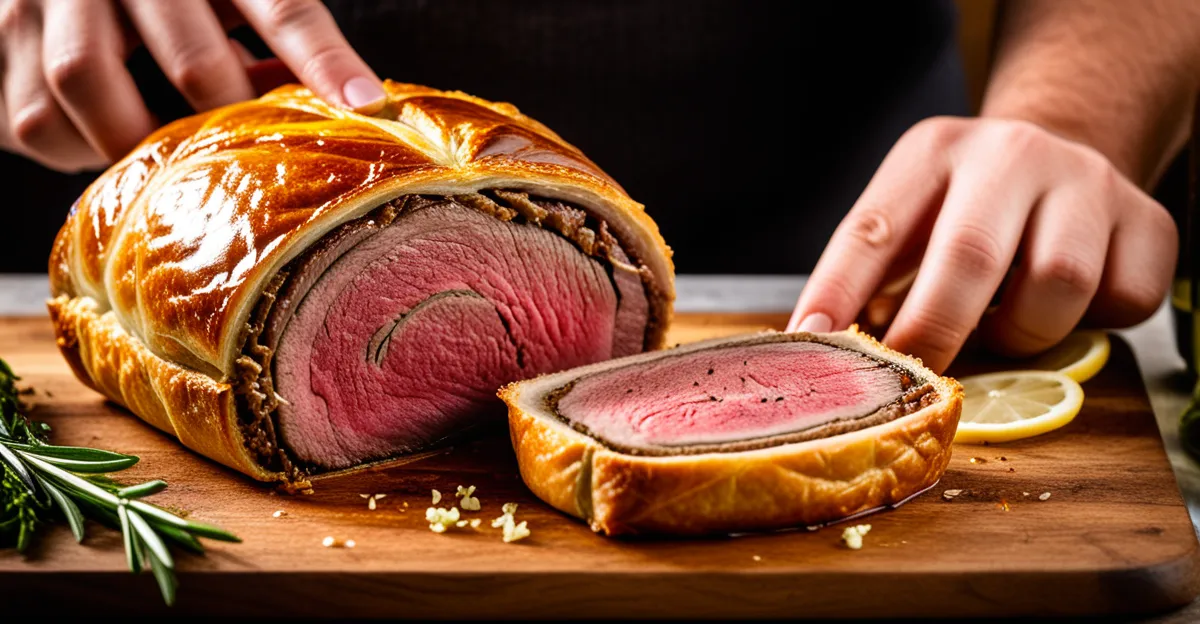Essential Ingredients for Beef Wellington
Understanding the classic beef Wellington essentials is crucial for creating an authentic dish. The cornerstone is the beef tenderloin, prized for its tenderness and rich flavour. Selecting a quality cut ensures the meat remains juicy and melts in the mouth after cooking. Proper trimming and even thickness are key factors.
Equally important is the puff pastry, which provides the signature buttery, flaky texture that contrasts beautifully with the meat. Whether using store-bought or homemade puff pastry, the goal is a light, crisp finish that encases the Wellington perfectly without becoming soggy.
Also to read : How Did British Cuisine Evolve Over Time?
Another must-have beef Wellington component is the mushroom duxelles—a finely chopped blend of mushrooms sautéed until all moisture evaporates, intensifying the umami notes. This layer adds depth and moisture control between the beef and pastry.
Together, these beef Wellington ingredients represent the essential framework of the dish. Each plays a precise role: the tenderloin for texture and flavour, the puff pastry for crust, and the mushroom duxelles for moisture and complexity. Mastering these elements is the first step toward culinary success.
This might interest you : What are the must-try tips for a perfect steak and kidney pie?
Key Supporting Ingredients and Their Functions
Supporting ingredients play a pivotal role in perfecting beef Wellington. Prosciutto for beef Wellington is a classic choice, acting as a thin, salty layer that wraps the beef tenderloin. Its primary function is creating a moisture barrier, preventing the puff pastry from becoming soggy. This layer also adds an extra dimension of umami, enhancing the overall flavour complexity.
To achieve that signature golden-brown, glossy crust, applying an egg wash to beef Wellington is essential. Typically made from beaten egg or egg yolk, the egg wash promotes even browning and a professional finish. Without it, the pastry may bake unevenly and lack that inviting shine.
Pâté for beef Wellington is often an optional but luxurious addition. Traditional recipes sometimes use foie gras pâté for richness, although mushroom pâté is a popular alternative for a more earthy flavour. The pâté layer complements the mushroom duxelles with added depth, creating a more complex mouthfeel.
Together, these must-have beef Wellington components contribute to texture, moisture control, and flavour enhancement, underscoring the dish’s sophisticated character.
Tips for Ingredient Quality, Substitutions, and Preparation
Choosing high-quality beef Wellington ingredients is fundamental. For beef tenderloin, seek cuts with fine-grained texture and consistent marbling; this ensures tenderness and rich flavour. Freshness of puff pastry also matters—if homemade isn’t an option, select reputable store-bought versions that bake evenly and achieve that buttery, flaky texture.
When facing dietary restrictions or ingredient shortages, consider substitutions carefully. For example, if traditional prosciutto is unavailable, thinly sliced Parma ham or even smoked turkey breast can serve as a moisture barrier without compromising too much umami. For pâté for beef Wellington, mushroom pâté is a common substitute for foie gras, providing an earthy richness suitable for vegetarian preferences.
Proper beef Wellington preparation advice includes thoroughly drying the mushroom duxelles to avoid soggy pastry, and chilling the wrapped tenderloin before baking to maintain shape. Also, applying an even egg wash beef Wellington ensures a golden-brown crust. These steps collectively preserve texture, moisture, and flavour integrity, making the dish both authentic and approachable.




